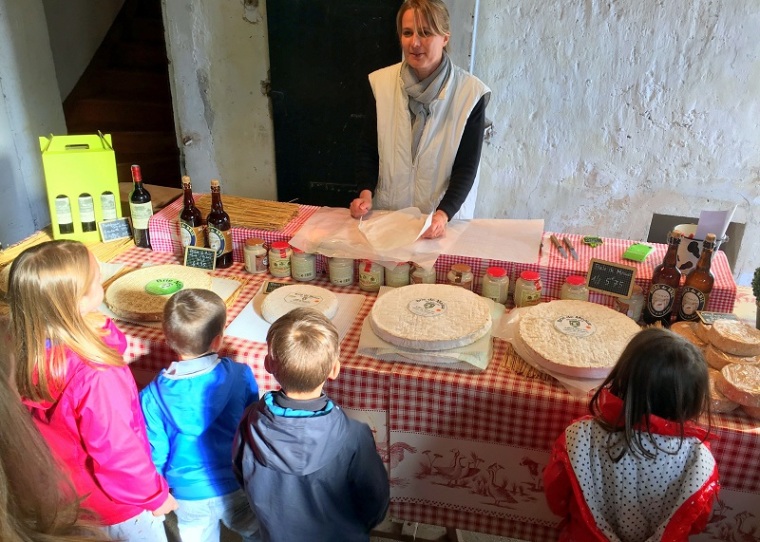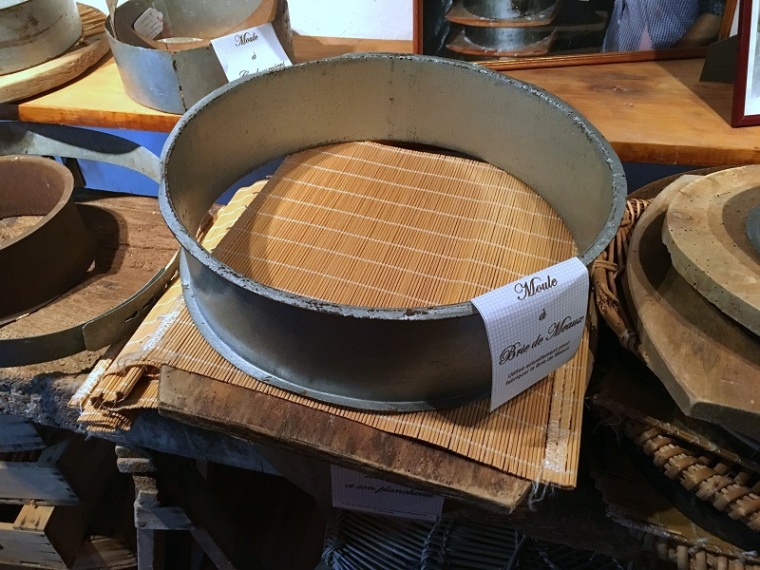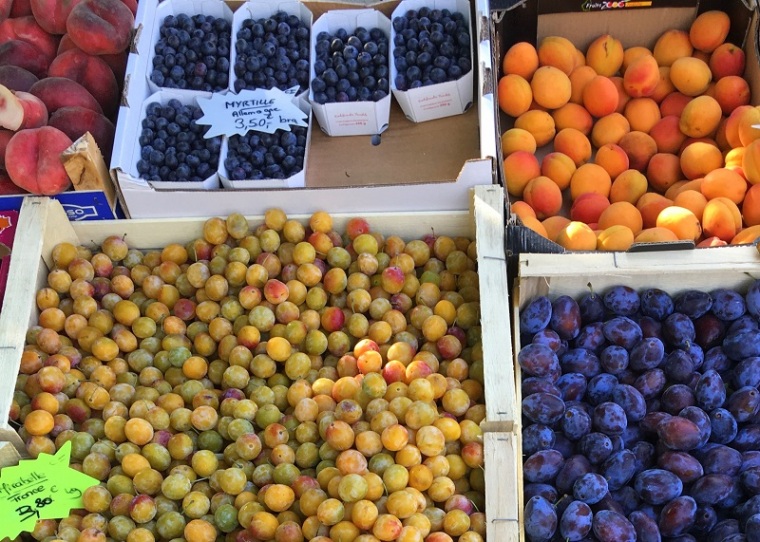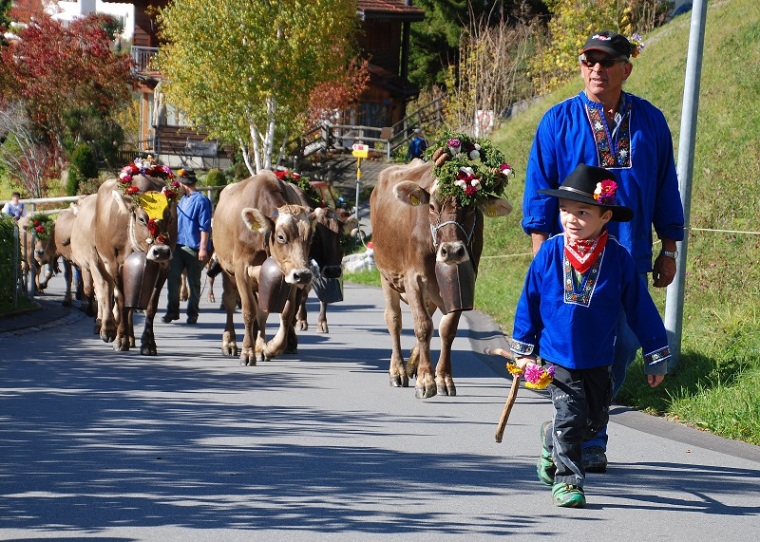
The story goes that Charlemagne, that most magnificent of kings, liked Brie so much that he told the bishop who introduced him to the cheese to send two cartloads of the fromage to Aix-la-Chapelle (now Aachen, Germany) so that the king of kings would always have some to nibble on. And, so the story goes, many other people in exalted positions with crowns on their head were of the same opinion in the centuries to come – a great marketing story if nothing else.
The Sanctum Sanctorum of Brie is in a basement of a small farm in the middle of Jouarre, a town in the département Seine-et-Marne (the modern incarnation of the ancient Brie region), a little under an hour east of Paris. It looks nothing like you would expect it to look. Stéphane Ganot and his sister Isabelle who run the 120-year-old family business are the high priest and priestess in the temple and again, they look like mere humans, not too tall, not too short, not too thick, not too thin. Sounds underwhelming, doesn’t it? And yet I felt, at the end of a long day on which it rained off and on, after visiting a champagne cellar, an old Picardie mill, a Viollet-le-Duc castle and a terrible roadside café, that we had arrived at the epicenter of cheese in France. The Fromagerie Ganot is where local farmers bring their ordinary brie tourtes (Brie de Meaux, Brie de Melun, Brie de Nangis, Brie de Provins) and Stéphane and Isabelle elevate them, with a lot of care, know-how, patience and modern technology to little mold-covered pieces of heaven.

Stéphane and Isabelle aren’t making any Brie. They collect Brie from neighboring farmers and make that Brie better. They are affineurs. They keep the cheese at the exact right temperature, the exact right moisture, turn it exactly when it needs to be turned and in that way, they tease the very most out of the potential that the farmer puts in. Compared to the actual cheese making, affinage takes time and, if you believe brother and sister Ganot, is half science and half art. And they share their art in small doses and only at certain times. Getting a spot on their tour feels a bit like winning the cheese lottery. Because as enthusiastic as they present their trade and their cheese, they don’t have all the time in the world, because they have tourtes to turn.

in the attic of one of the buildings on the farm, they carefully explain, with a slide show and in a small museum, some of the finer details of their trade. The land in the Seine-et-Marne region is getting more expensive every year, they say, and as a result there is less and less land for the cows to graze on. So they’re not exactly in a booming business, also because Brie is probably the most ripped-off cheese in the world: it did not get an AOC (now AOP) protection until 1980, by which time this cheese had already been copied around the world from Brazil to Wisconsin and from Japan to California.
The Appellation d’Origine Contrôlée designations stipulate things like the geographical region in which the product must be produced, the methods of production, the ingredients etc., etc. Since the EU took over the regulation of foodstuffs, they’re called AOPs, Appellation d’Origine Protégée. In Kathe Lison’s book The Whole Fromage, she explains with great insight how sometimes, these rules end up leaving out cheese makers who just have a slightly different way of making their cheese – long traditions and generations of know-how notwithstanding. In the case of brie, there are two kinds that have an AOC protection – Brie de Melun and Brie de Meaux, and there are others that go without – not that this perturbs the Ganots: the other Bries are handled with just as much love and expertise.

So is the Brie Noir, also without an AOC, and a bit of an oddball in the Brie palette: the name normally evokes visions of ivory colored, creamy, flavorful goodness, and Brie Noir is a decided departure from that: it is grey-brown, chewy and has a very strong flavor. It is best enjoyed as an ingredient in other dishes, and during the tasting we enjoyed it was served in the form of thin shavings. Lo and behold, the shavings are a much better way to eat this cheese (basically a Brie that has been allowed to ripen, ripen and ripen some more – up to 10 months, where 4 weeks is normal for regular Brie) that in bite-size chunks: the latter just become a chewy chore with a flavor too intense to enjoy.
With the farm land in the old Brie region becoming ever more expensive, Korean, Japanese and Brazilian counterfeits being produced in ever larger quantities, is there hope? Yes, darn it, yes! Because the French give a damn. They want Brie from Brie. They want to be sure that the milk is raw, that the process to get to the perfect cheese involves people, not machines. And, most importantly: they pass on the passion. the majority of the participants of the Brie-tour were kids. Kids who asked questions, who touched the things they were allowed to touch, and who expertly sampled the cheeses. And kids who will grow up to be the kind of adults Brie needs: the staunch defenders of the real deal. After our tour we were able to spend a small fortune on an enormous chunk of Brie de Meaux (the cheeses are larger than the Brie de Melun and the flavor is somewhat milder) a jar of local honey, some Brie de Melun and a few Petits Cœurs, small hearts, made of a combination of crème fraîche and cream (yes indeed, think OMG) which lasted us the remainder of the week in Brittany which, for all of its other tremendous qualities, is not a particularly cheesy part of France.





















